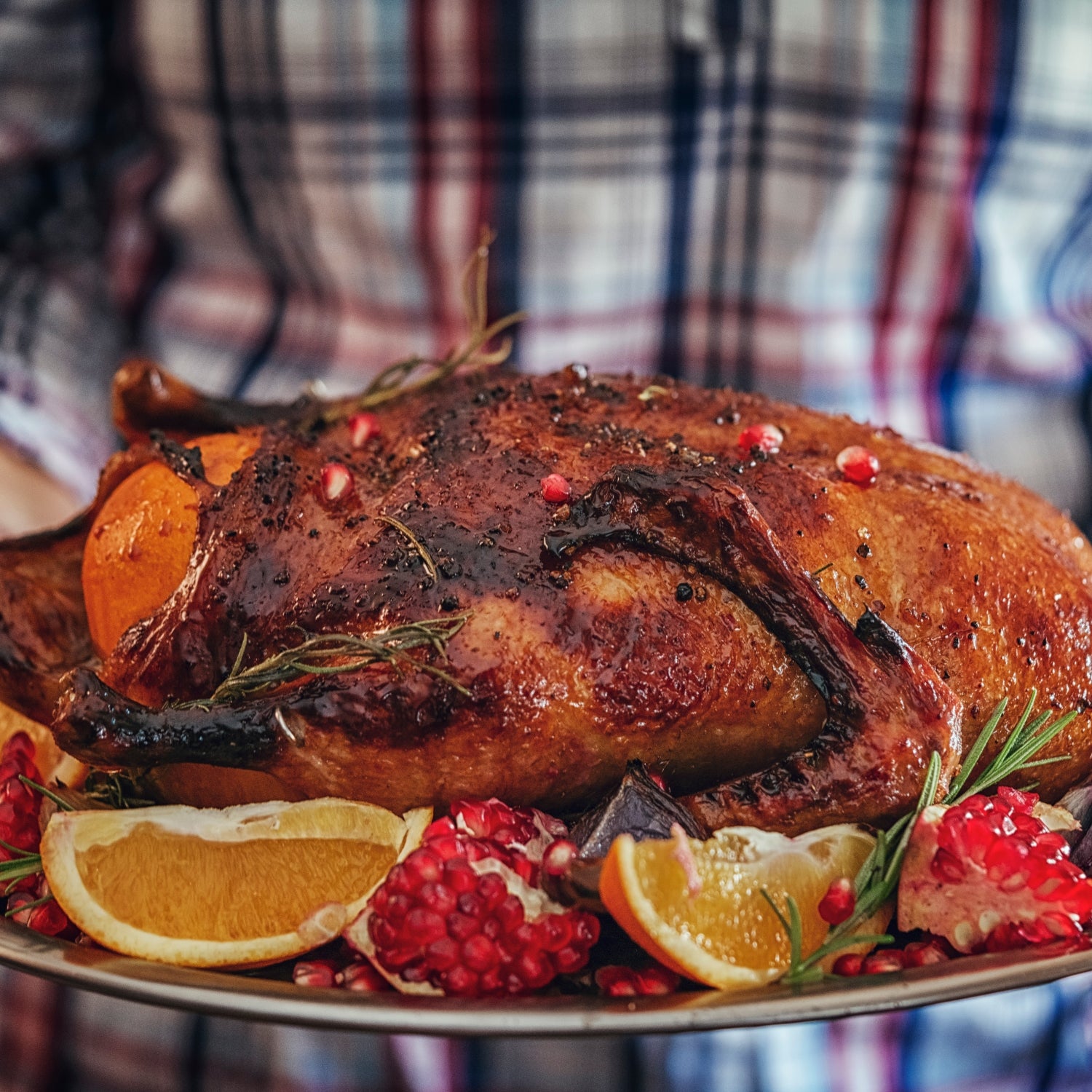This year, celebrate Thanksgiving sustainably with a celebration that forgoes the store-bought bird. You can always try wild turkey (check out our guide here), but if your taste tacks toward something slightly off-beat, we’ve curated a few of our non-traditional favorites. Read on for a look at how to prepare Thanksgiving, your way.
For a Rich Main: Duck
Although duck is smaller than turkey, weighing an average four to five pounds, it has some distinct advantages, including a high-fat content and richer taste due to skin fat that naturally bastes the bird and retains moisture.
To roast a crispy, moist whole duck, trim the bird of excess fat and brush it with a three-to-one ratio of soy sauce and honey. Place it breast side down in a roasting pan in a 450-degree oven, and place another pan filled with water just below the rack. Allow it to roast for 30 minutes. After 30 minutes, prick the duck all over with a sharp knife and flip it onto its back. Season it with salt, pepper, and more of the soy-honey glaze. Add a little more water to the pan and roast for 20 more minutes before pricking the breast with a knife. Continue to brush with the glaze every 10 minutes until an instant-read thermometer inserted at the thigh reads 150 degrees. As with turkey, you’ll want to wait a minimum of five minutes before carving.
For an Impressive Presentation: Pheasant
These small game birds weigh about two to four pounds and are best for smaller gatherings or lush presentations, as you can cook multiple pheasants and serve them on one large platter. The meat is leaner and more savory than chicken and tends to contain fewer hormones and antibiotics than the store-bought birds.
Like chicken, pheasant can either be spatchcocked—a method by which the backbone and part of the leg bone are removed—and placed directly on the grill, or seared on the stovetop and cooked in a pan right in the oven. The bird cooks faster than a turkey by several hours and is a more approachable option for budding cooks, but it goes just as well with traditional Thanksgiving sides. Wisconsin-based , the country’s largest pheasant farm, suggests roasting a whole pheasant at 350 degrees for one hour and then reducing the heat to 300 and cooking until the bird reaches an internal temperature of 165 degrees.
For a Lean Tenderloin: Venison
Venison is a lean, red meat that can often be substituted for beef—great for those inclined to serve a tenderloin at Thanksgiving. Cuts, it should be noted, are much smaller than beef cuts. And since venison has a lower fat content than beef, you should add ample fat to the pan while cooking and avoid preparing venison past medium.
For cuts like the tenderloin—a particularly lean, prized cut—consider searing it in a pan and forsaking the oven. , one of the premier online retailers carrying venison tenderloins, suggests searing a seasoned loin in an oiled sauté pan for two to three minutes on each side, until it has achieved a brown crust and has reached an internal temperature of 125 degrees. Deglaze the pan with stock, wine, fortified wine, or even sweetened juice for a pan sauce that you can serve on the side.
For a Sustainable Protein: Boar
Wild boar is an invasive and destructive pig species that’s sustainable to hunt. A rack of chops, which can be roasted whole, bones included, breaks down to eight full-sized individual rib chops. The meat is rich and heady, with a taste that falls somewhere between pork and venison (their flavorful diet of acorns and fallen fruit contributes to their compelling taste).
According to , one of the top purveyors of wild boar, it’s best to cook rib racks of wild boar at 375 degrees, until they reach an internal temperature of 140 degrees, which is about medium-rare.


